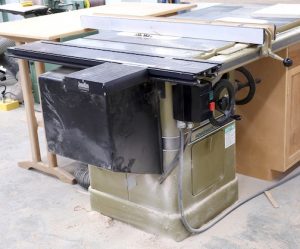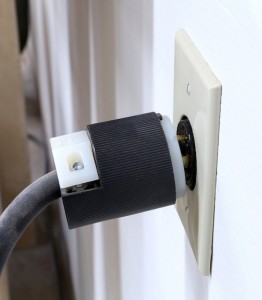We may receive a commission when you use our affiliate links. However, this does not impact our recommendations.
 Most everyone is familiar with the saying “When the editor is away the other staff members will play” (or you’re familiar with a similar saying). Late last week and early this week, our editor was away for a short vacation down south. The other staff members, two of whom were legitimately working on upcoming projects for the magazine, were in the shop doing what we do. I was out there to begin a project due a few issues later in the year.
Most everyone is familiar with the saying “When the editor is away the other staff members will play” (or you’re familiar with a similar saying). Late last week and early this week, our editor was away for a short vacation down south. The other staff members, two of whom were legitimately working on upcoming projects for the magazine, were in the shop doing what we do. I was out there to begin a project due a few issues later in the year.
After a quick rip at the table saw, I returned to make another cut. As I flipped the switch, the automatic dust collection turned on, but the blade simply gyrated back and forth like a metronome sitting on a piano. I stood silent wondering what happened.
My quizzical look attracted the others, and soon the three of us were staring at the Powermatic 66 that has been in the Popular Woodworking Magazine shop for as long as I can remember. I must admit that my first thought was that the saw just crapped out. A second staff member suggested that the capacitor must have died, and the third member boldly stated that we could continue working if we were all using handsaws – a true but funny statement given that he was working on an involved project build out of quartersawn white oak.
 After a short time, editor B and editor C returned to the work. I studied the problem then decided to look into the switch, thinking the problem could be there. Being educated in electric – only to the point of knowing shock is not fun – I went to the wall plug to pull the cord. That’s when I noticed that the plug was hanging from the outlet. It wasn’t far enough out to stop the flow of electricity, but it was just out enough to break the link on the third leg (I guess) – it’s a three-phase unit.
After a short time, editor B and editor C returned to the work. I studied the problem then decided to look into the switch, thinking the problem could be there. Being educated in electric – only to the point of knowing shock is not fun – I went to the wall plug to pull the cord. That’s when I noticed that the plug was hanging from the outlet. It wasn’t far enough out to stop the flow of electricity, but it was just out enough to break the link on the third leg (I guess) – it’s a three-phase unit.
I pushed the plug in, twisted the connection to lock things in place then flipped on the saw’s switch. Bingo. The saw roared back to life. Immediately, editor B let loose with, “Now I know why all the tool manuals begin with ‘Make sure the power cord is connected.’”
Sometimes the problems are simple to correct.
I’m sure you would have checked the plug, but if you’re befuddled about any of your major wood shop power tools, you need to order our Power Tool Tune-up Collection. You’ll find answers there.
Here are some supplies and tools we find essential in our everyday work around the shop. We may receive a commission from sales referred by our links; however, we have carefully selected these products for their usefulness and quality.








I always remove the motor first, then check the connection!
Sure would be great if all our shop problems were like that one !
If I may offer a quick fix for most electronic plug problems. Have you noticed that the ground prong on a corded line is longer then the others? There is a reason for this. It’s because that smilely face I your outlet box is in wrong. The ground prong is longer so that if something falls on the plug it won’t come out. If pressure is put on the plug it binds on the inside of the outlet and holds. If you put pressure on the smilely face you will see that it will come out and may even breaks off the ground prong. It’s just something to think about. I worked for a electronic device manufacturing company, and made millions of these things. I asked the engineering department why and this is what I was told.
Good thing the switch was turned off when you fixed the plug – things could have gotten really exciting!!
Heh. People forgetting to plug in the power, or other cables, put a roof over my families head for a good decade.
Back in the 90s I worked for Apple Tech support in their Network and Servers, high level stuff with trained end users. Still, probably every tenth call started with, “Of course I check all the connection ,” and ended with, “son-of-bleep” as they found a loose cable of some kind.
I myself recently spend three days troubleshooting a dead monitor or dead video board issue only to discover that the data cable to the back of the monitor was not actually connected but just hanging on the screws. I only figured that out because it eventually fell off.
Today, when I troubleshoot a power issue, I start at the wall plug and work towards the motor, ever single pass. It’s tedious and feels a little silly but like a pilots preflight, it saves time and bother in the long run.
It’s an exercise in humility I think. No matter how knowledgable or skilled you are, that doesn’t free you from the basic errors all people are prone to.
Who plugged in a twist-lock connector without twisting it?
Oh how true! Thanks for the reminder. It’s also good to check your set-ups when returning to the shop after a pause or being absent over night. Just when you want to repeat a cut for multiple items things have changed.